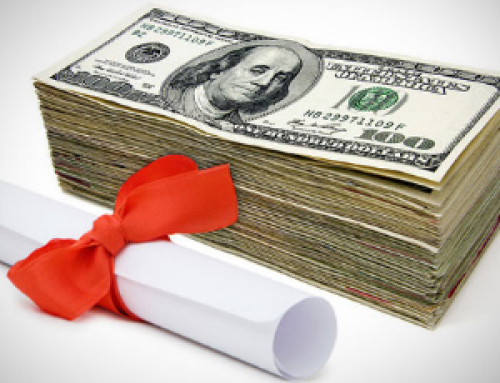
Because the cost of a higher education continues to rise, chances are that you will need student loans to help you cover the cost of going to school. Even if you have saved up with a 529 plan, and have some sort of partial scholarship, you might still need student loans to help pay for living expenses and other indirect costs.
As you apply for schools, you should consider your options when applying for student loans. Your options fall into two categories: Federal student loans and private student loans.
Federal Student Loans
Federal student loans are offered directly by the government. The government is the lender, and usually charges a fixed rate. Those who qualify for subsidized loans normally pay a lower fixed rate than those who must take unsubsidized loans. There are three types of federal student loans:
Stafford: These loans are subsidized or unsubsidized. If you have a low enough income to qualify you for subsidized loans, not only do you end up with a lower interest rate, but you also don’t start accruing interest until you leave school. Unsubsidized loans accrue interest as soon as they are disbursed, although you don’t have to pay the interest until you leave school.
Perkins: These loans come with a low, fixed interest rate. They are actually made by the school, which makes them from a fund provided by the government. Undergraduate and graduate students who wish to take advantage of Perkins loans must demonstrate need.
PLUS: This loan program is actually for the parents of undergraduate students. (Although grad students can also apply for their own expenses.) Parents are supposed to use the money to help pay education expenses for dependent children.
In order to qualify for federal student loans, a Free Application for Federal Student Aid (FAFSA) must be filled out each year. This will help determine your eligibility for different loan programs, although just about anyone can receive the unsubsidized Stafford loan.
Private Student Loans
Rather than coming from the Federal government, these loans come from private lenders. Since there are limits to how much the government will lend you, you might need to turn to private lenders to bridge a funding gap. Private lenders can include:
Banks: Your local bank, or a national bank, might offer you a student loan.
Sallie Mae: The largest private student loan servicer is Sallie Mae. This is a publicly traded corporation that not only originates private student loans, but also buys loans from others, and even services federal loans.
P2P lending: It’s also possible to receive private loans via P2P lending. Social lending programs aimed at students, like TuitionU and even well-known P2P lending sites, can provide the opportunity for student loans.
Applying for these loans is a little more rigorous. Your credit history will be checked, and you will need to have a good credit score if you want to qualify. If you don’t have an adequate credit score, you will need to get a co-signer. Often, you don’t have the same hardship deferment and forbearance options offered by federal loans. Additionally, you might not get the six-month grace period that federal loans allow you after you leave school.
Private student loans have started offering competitive rates, and are often cheaper than federal loans. However, the rates are often variable, rather than fixed. Plus, your co-signer is taking on a risk if you end up unable to pay. And, unlike most federal loans, which are discharged on death, private lenders often require your family to pay your obligation.
Before you decide what to do, weigh the pros and cons of federal and private loans. Your choices now can make a big difference later.













Follow Us